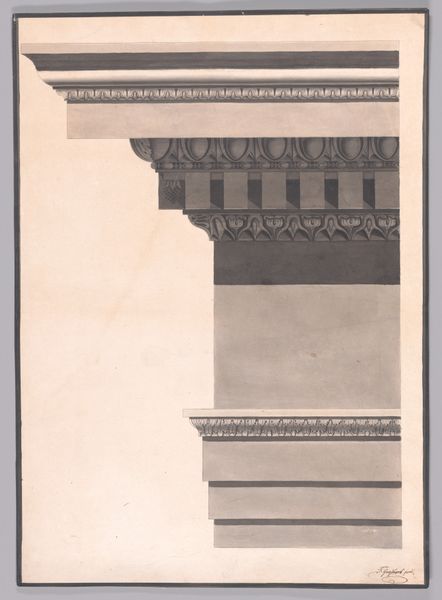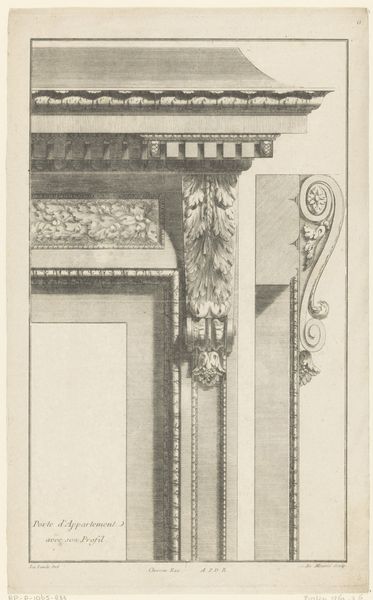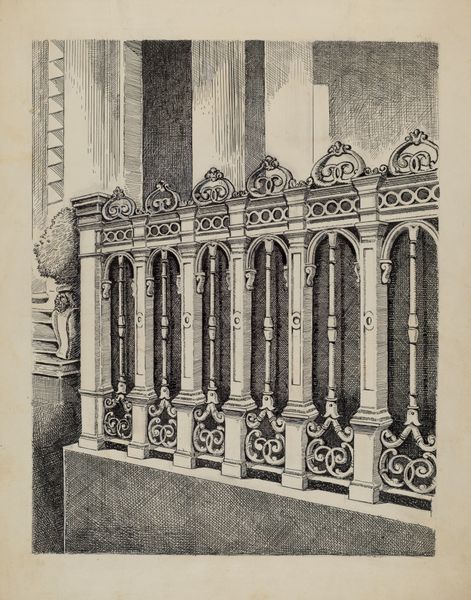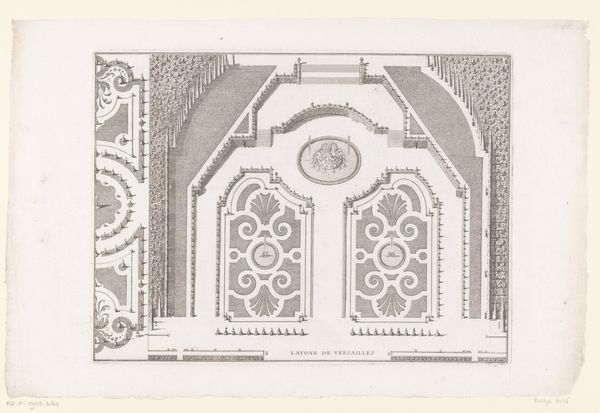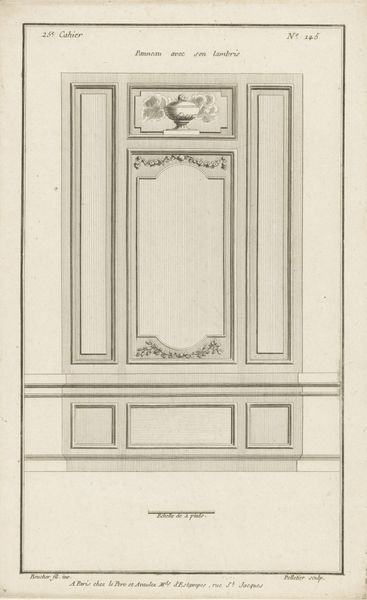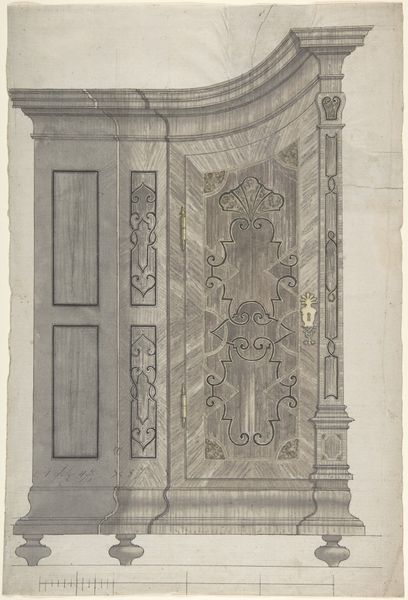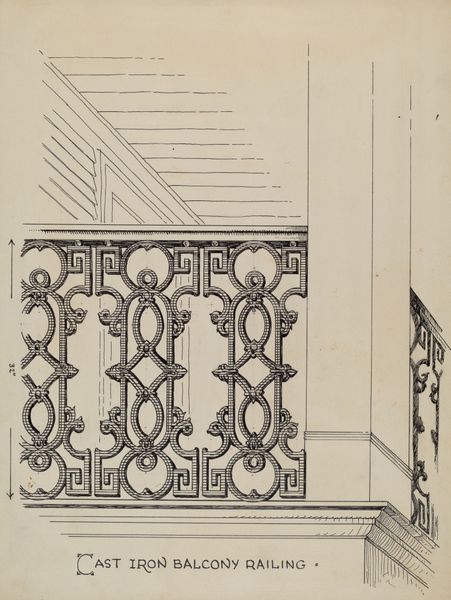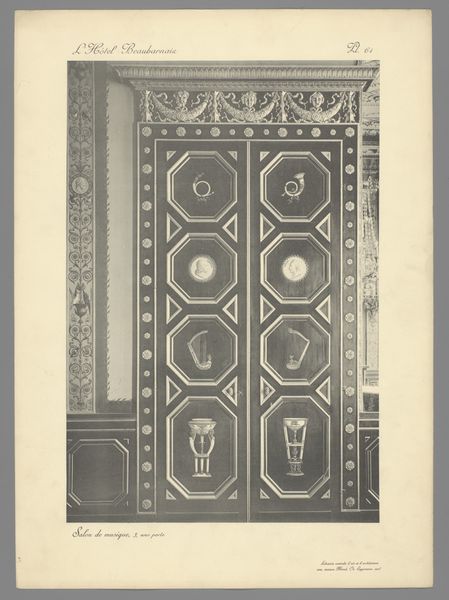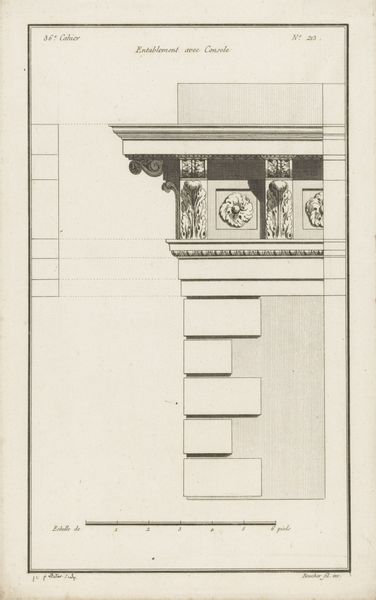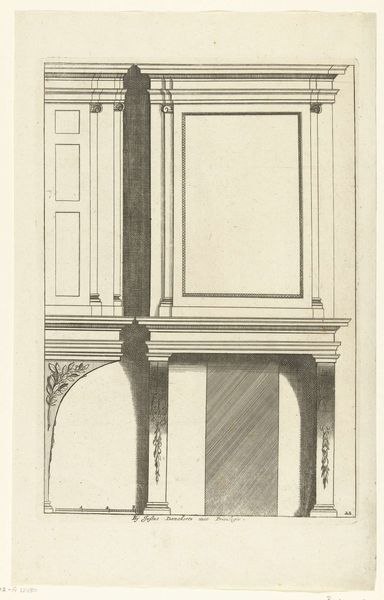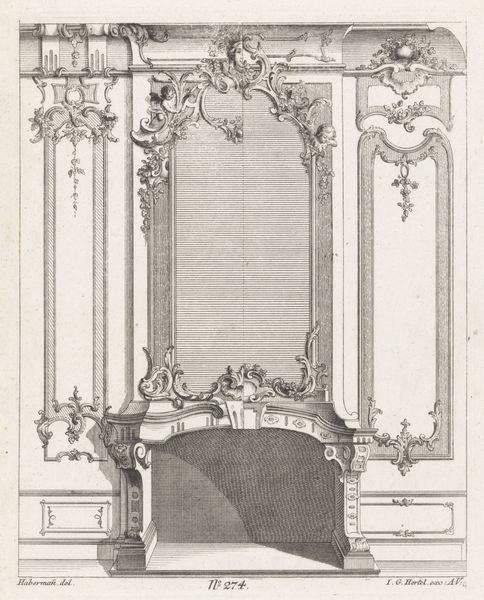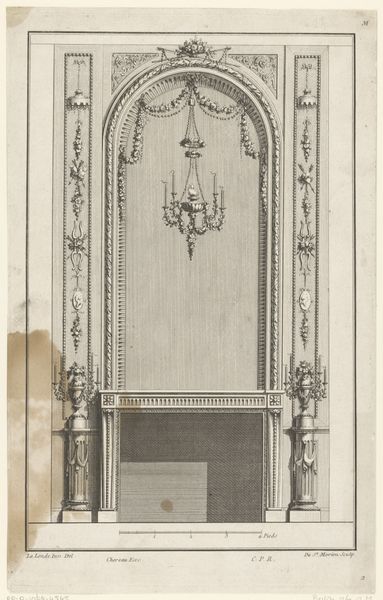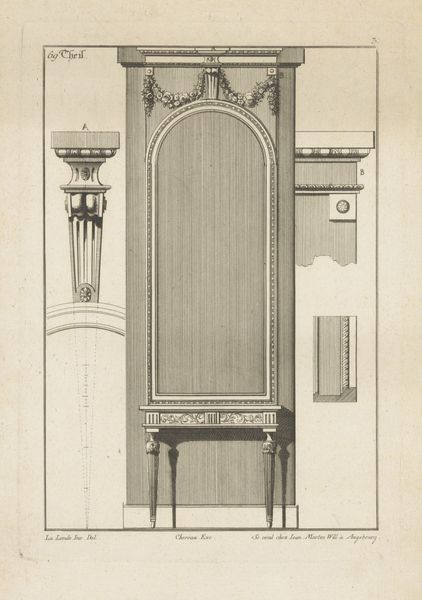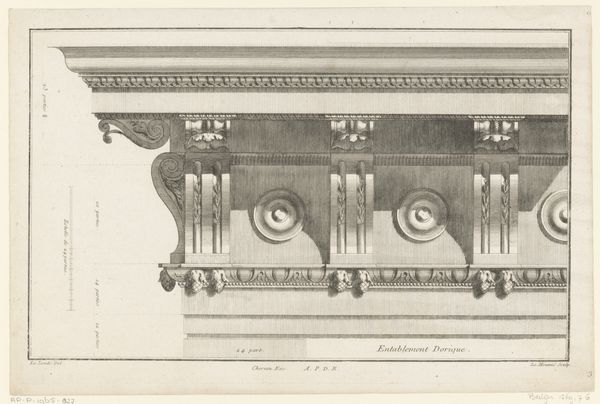
drawing, print, photography, ink, engraving, architecture
#
drawing
# print
#
charcoal drawing
#
photography
#
ink
#
geometric
#
column
#
arch
#
history-painting
#
academic-art
#
engraving
#
architecture
Copyright: Public domain
Curator: Look closely at this detailed rendering titled "Modinatura in great internal order of the first of the Pantheon," by Giovanni Battista Piranesi. Editor: It feels so precisely…clinical. Almost as if the artistry is secondary to conveying structural information. The stark contrast, the meticulous line work—it strips away any sense of awe I might otherwise feel in the presence of such classical grandeur. Curator: And yet, isn't that the point? Piranesi, through the exacting nature of engraving, print and ink, presents us with an almost forensic examination of the Pantheon's architecture. Consider the geometric shapes, repeated motifs…he's dissecting classical form itself. Editor: I suppose. I see a commentary on the function of the monument—a visual archive, less concerned with conveying beauty, and more focused on documenting detail for prosperity. How interesting, when one sees a history book and the other a design brief. Curator: The light and shadow, even in this black and white medium, give depth to the architectural forms, almost giving them a hyper-real presence. It elevates it from mere documentation to something with artistic presence. Editor: Precisely! And if we reflect that the Pantheon served as a church and royal tomb over the centuries, the act of meticulously recording the building’s parts turns almost funerary. We should notice, however, that this print could easily reach hundreds, even thousands, of hands, making its public role impossible to understate. Curator: It makes me consider how architectural details were not just functional, but symbolic, communicating power, order, and historical legacy. Editor: I agree, this isn’t just a study of structure; it’s a lens through which we examine Rome’s artistic ambitions as public symbolism. Piranesi successfully blurs the line between art, historical record, and architectural theory. Curator: Ultimately, the enduring legacy of "Modinatura in great internal order of the first of the Pantheon" reminds me how deeply art and history are intertwined and what critical and societal role a singular artist might play in visualizing those values. Editor: Yes, this dissection shows how architectural elements communicate. Now I see something like a map, and less like just something sterile and clinical.
Comments
No comments
Be the first to comment and join the conversation on the ultimate creative platform.
